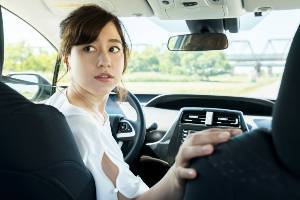 Many types of collisions occur on Wisconsin roads each day, including collisions while driving in reverse. The National Highway Traffic Safety Administration (NHTSA) estimates that about 30,000 accidents per year involve one or more vehicles backing up.
Many types of collisions occur on Wisconsin roads each day, including collisions while driving in reverse. The National Highway Traffic Safety Administration (NHTSA) estimates that about 30,000 accidents per year involve one or more vehicles backing up.
You may think these estimates are too high or that because backing up incidents often occur at low speeds they are not that serious. However, reversing collisions can result in significant injuries. These injuries can range from broken bones to whiplash, soft-tissue damage as well as neck and back injuries.
Below, we discuss how fault is assessed in reversing collisions and when the driver going in reverse may not be fully liable for damages. If you have been injured by a negligent driver, a vehicle accident lawyer in Appleton is ready to review your situation during a risk-free, no-obligation legal consultation.
Licensed. Local. Lawyers. Ph: (920) 215-4788.
Possible Scenarios for Reversing Collisions
Reversing collisions happen often in parking lots when one or more vehicles are backing out of a parking space. For instance, some of these accidents occur when:
- One vehicle going in reverse hits a stopped vehicle
- One vehicle going in reverse hits a vehicle passing by
- Two vehicles are backing out of different parking spaces at once
Another scenario is when one vehicle backs into a lane of traffic and is hit by an oncoming vehicle. Reversing collisions can also occur in driveways – one vehicle going in reverse hits a stationary vehicle or object. One vehicle going in reverse may even hit a pedestrian or bicyclist passing by.
Who is at Fault When a Vehicle is Going in Reverse?
Assessing fault for a reversing collision generally comes down to answering two questions: who had the right of way and whether there was one vehicle involved in the collision that was not moving.
The state of Wisconsin has clearly established right-of-way laws to help motorists avoid preventable accidents. These laws dictate when one driver can go and when others sharing the road must yield. If a driver fails to yield the right of way and a collision occurs, he or she may be deemed at fault.
For instance, what if a driver backed out of a parking space and hit another motorist moving through the lane of traffic? The driver going in reverse will likely be held liable for not yielding to oncoming traffic.
Wisconsin Statutes 346.87 also states that the driver of a vehicle cannot reverse the vehicle unless that movement can be made with reasonable safety and without interfering with other traffic.
In a reversing collision, the moving vehicle is usually at fault. If one vehicle involved was not moving, the driver of the vehicle that was moving would be responsible. If there are two moving vehicles, the driver of the vehicle that moved first may be to blame. However, if the vehicle moving stops in enough time but ends up getting hit, that driver may share little to no blame in the event of a collision.
Is the Reversing Driver Always at Fault?
Most people automatically think the driver going in reverse is at fault in a reversing collision. Yet that may not always be the case. The reversing driver may only be partially at fault. He or she may share the blame with another driver. In some cases, the driver going in reverse may be the victim of negligence.
Negligent behavior may involve:
- Speeding and/or reckless driving
- Driving under the influence of drugs or alcohol
- Road rage or driving with intent to cause harm
The driver backing out of a driveway may have been hit by a driver excessively speeding in the area. This type of behavior when proven with supportive evidence is often a deciding factor when fault is disputed.
How to Avoid a Collision While Reversing
Reversing collisions are not always avoidable. However, there are things you can try to do to reduce your chances of being a victim or being at fault for an accident. This includes the following:
- Be aware of your surroundings and use your backup camera if you have one
- Check all your mirrors and blind spots before putting your vehicle in reverse
- Take your time backing out as other drivers and pedestrians may not see you right away
- Minimize your distractions by turning off the music or asking passengers to lower their voices
- Never assume another vehicle or pedestrian will stop while you are going in reverse
Decades Fighting for Accident Victims’ Rights
If you have been injured in a collision caused by negligence, we recommend reaching out to an experienced lawyer at our firm today. Accident victims who seek legal representation often recover more in compensation than those who decide to handle the insurance company on their own.
Sigman Janssen has decades of combined legal experience and a proven track record, recovering millions of dollars on behalf of our clients. The initial consultation is free of charge so there is no risk to you. There are no upfront fees to retain our services. You only pay us if we help you obtain a recovery.
Call (920) 215-4788 for a Free Case Review.